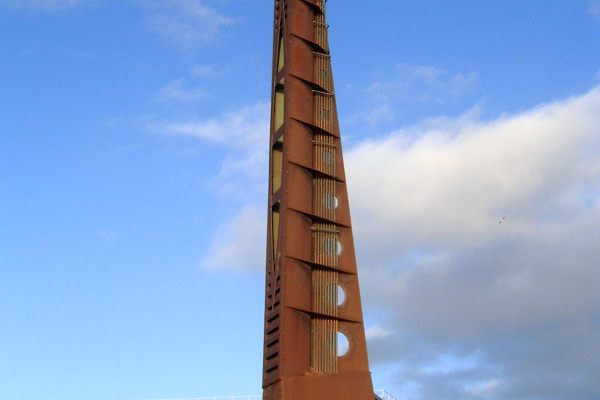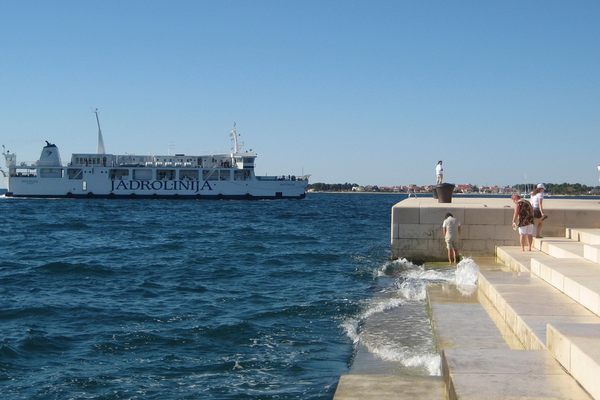Sweet Sounds of Water
 This story is brought to you by vapor-distilled smartwater, who found unique inspiration for their water by looking up to the sky. we hope the change in perspective this piece offers will help inspire you.
This story is brought to you by vapor-distilled smartwater, who found unique inspiration for their water by looking up to the sky. we hope the change in perspective this piece offers will help inspire you.
Before any humans thought to sing a song, the ocean was giving its own rhythm to the shores. Perhaps then it’s no surprise that artists and inventors around the world have turned the currents and tides into sweet symphonies.
At the “Sun Salutation” by the Zadar, Croatia, Sea Organ (photograph by EyeofJ)
Water and music together have a long history, going back to the hydraulic organ. The ancient Greeks created this water organ in a way that was similar to more modern pipe organs, but instead of blown air, the fall of water pushed sound through the reeds which were opened by the organist. While none of these organs survive, archaeologists deciphered their design through a pottery model discovered at Carthage and rare texts. In 1916, Francis William Galpin combined these materials to make a working prototype of the ancient hydraulis organ, which is held by the Museum of Fine Arts in Boston.
A trumpet & hydraulis player in a first century Terracotta figurine from Alexandria (via Louvre)
Later in 1986, artists Peter Richards and George Gonzales took the idea of harnessing the power of water for music right into the ocean. In the San Francisco Bay, they built the Wave Organ, which to this day lets out low whistles from a concoction of 20 PVC and concrete pipes lodged on a jetty. Depending on the lapping tide, the music can be erratic or sporadic.
San Francisco’s Wave Organ has since been joined by the 2005 Sea Organ in Zadar, Croatia. Designed by Nikola Bašić, 35 pipes emit long tones dependent on the rhythm of the waves. The organ is built into steps leading right to the sea, sort of turning the hydraulic organ on its side and inviting the public to walk over the perforations. Nearby a “Sun Salution” light installation embedded in the ground offers a digital light show in response. There’s also the 2002 High Tide Organ in Blackpool, England. The 49-foot tower of metal designed by Liam Curtin with John Gooding on the New Promenade appears like a contemporary sculpture, but when the tide rises air is pushed up 18 pipes for a water-controlled song.
Beyond these sea organs, other innovators have experimented with water acoustics. For example, hydraulophones, which are sort of played like pianos except you’re stopping or releasing water from spouts, have been installed in places like the Ontario Science Centre in Canada. This “keyboard fountain” has self-cleaning water jets connected to a pipe organ, which can be played by several people at once. There’s also a portable hydraulophone that you can take to right out to the currents to manipulate the waves and tides into otherworldly compositions.
Playing the Ontario hydraulophone (via Wikimedia)
While oceans seem to get the most music attention, in 2012 the FLOW tidemill floated on the River Tyne in Northern England. The incredible structure combined energy generation with three electronic instruments, which with the mill waterwheel were controlled by the direction of the waves, wind, and tides. This and other human-nature collaborations show how we can interact with the tempo of our waterways to better bring their vibrancy to public attention, and in that way encourage their sustainability.






Follow us on Twitter to get the latest on the world's hidden wonders.
Like us on Facebook to get the latest on the world's hidden wonders.
Follow us on Twitter Like us on Facebook